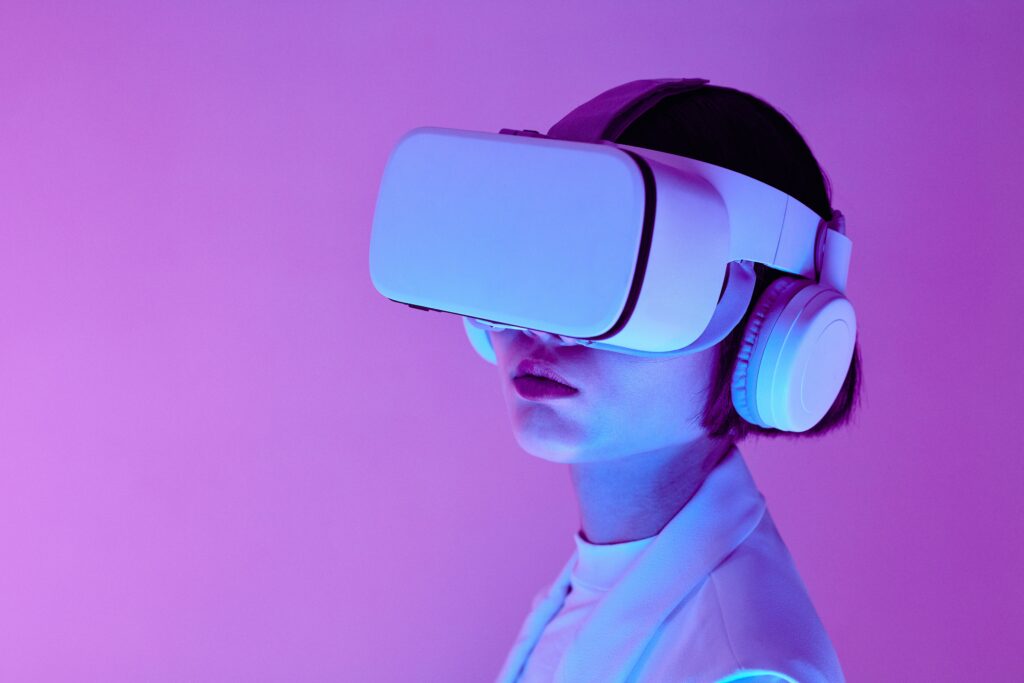
In the age of digital transformation, the integration of Augmented Reality (AR) and Virtual Reality (VR) into social media platforms has become a pivotal trend. These technologies are not only enhancing the user experience but also reshaping the way we interact and engage with virtual content. This article delves into the impact of AR and VR on social media experience, exploring their potential and challenges.
The emergence of AR and VR has opened new horizons for social media, transforming it from a platform for sharing and communication into an immersive and interactive experience. From virtual try-ons to 3D explorations of places and products, these technologies are redefining the boundaries of digital interaction.
Moreover, the integration of AR and VR into social media is not just a technological advancement; it’s a cultural shift. It represents a move towards a more engaging, personalized, and experiential form of communication. As we continue to explore and understand these technologies, the way we perceive and interact with social media is bound to evolve, offering new opportunities and challenges for users, developers, and marketers alike.
The Rise of AR and VR in Social Media
Augmented Reality (AR)
Augmented Reality overlays digital information onto the real world through devices like smartphones and AR glasses. Social media platforms like Snapchat and Instagram have leveraged AR to create interactive filters and effects, allowing users to engage with content in a more immersive way.
The application of AR in social media goes beyond mere entertainment. It has become a powerful tool for brands to engage with their audience, offering virtual try-ons, interactive advertisements, and personalized shopping experiences. The convergence of AR with social media has opened new avenues for creativity and innovation, transforming the way businesses connect with their customers.
Furthermore, AR is democratizing the virtual experience, making it accessible to a wider audience. With just a smartphone, users can now interact with augmented content, breaking down the barriers that once limited this technology to specialized hardware. The integration of AR into social media is a testament to the rapid advancement of technology and its potential to enrich our digital lives in unexpected ways.
Virtual Reality (VR)
Virtual Reality offers a fully immersive experience, transporting users into a virtual environment. Platforms like Facebook Horizon are pioneering the integration of VR into social media, providing a new dimension of connectivity and interaction.
The incorporation of VR into social media is more than just a technological novelty; it’s a step towards a more profound and engaging virtual community. Virtual reality allows users to meet, interact, and even feel the presence of others in a virtual space, transcending geographical boundaries. This has led to the creation of virtual events, conferences, and social gatherings, redefining the way we connect and socialize online.
Moreover, the use of VR in social media is pushing the boundaries of content creation and consumption. From 360-degree videos to interactive virtual tours, VR is enabling users to create and explore content in ways that were previously unimaginable. As VR technology continues to advance and become more accessible, its integration with social media is expected to deepen, offering users a richer and more immersive experience that goes beyond the traditional boundaries of digital interaction.
Impact on User Experience
Enhanced Engagement
AR and VR technologies enable users to interact with content in novel ways, fostering greater engagement and participation. Whether it’s trying on virtual makeup or exploring a virtual art gallery, these technologies provide a richer, more interactive experience.
The use of AR and VR for enhanced engagement is not limited to entertainment and leisure. Educational institutions, healthcare providers, and various industries are leveraging these technologies to create engaging training modules, simulations, and therapeutic interventions. The ability to immerse users in a controlled virtual environment offers unprecedented opportunities for learning, skill development, and healing.
Furthermore, the enhanced engagement facilitated by AR and VR is transforming customer service and marketing strategies. Businesses are utilizing these technologies to provide personalized shopping experiences, virtual tours of properties, and interactive product demonstrations. This not only enhances customer satisfaction but also provides valuable insights into consumer behavior and preferences, enabling businesses to make informed decisions and tailor their services accordingly.
Personalized Content
Through AR and VR, social media platforms can offer personalized content tailored to individual preferences and behaviors. This personalization enhances user satisfaction and encourages prolonged platform usage.
Challenges and Considerations
While AR and VR are revolutionizing social media, they also present challenges. Issues related to privacy, accessibility, and technological limitations must be carefully considered to ensure a positive user experience.
Conclusion
The integration of AR and VR into social media is a transformative trend that is enhancing user experience in unprecedented ways. As these technologies continue to evolve, they will undoubtedly shape the future of social media, offering new opportunities and challenges alike.
The fusion of AR and VR with social media is not merely a technological advancement; it’s a paradigm shift in how we communicate, interact, and consume content. It’s paving the way for more immersive, personalized, and engaging experiences that transcend the limitations of traditional digital platforms. From virtual shopping to educational simulations, the possibilities are endless and only limited by our imagination.
Furthermore, as AR and VR become more accessible and integrated into our daily lives, they will continue to influence not only social media but various aspects of our society. The ethical considerations, accessibility, and responsible use of these technologies will be vital in ensuring that they benefit all users. The journey of AR and VR in social media is just beginning, and it promises to be an exciting and transformative journey that will redefine our digital landscape.
